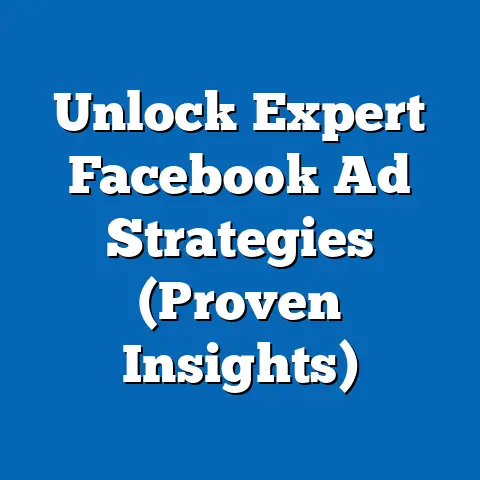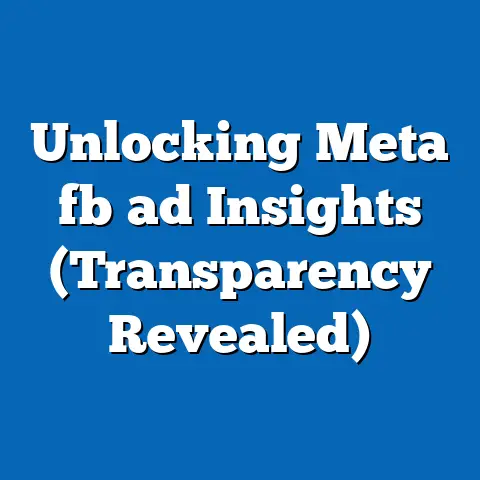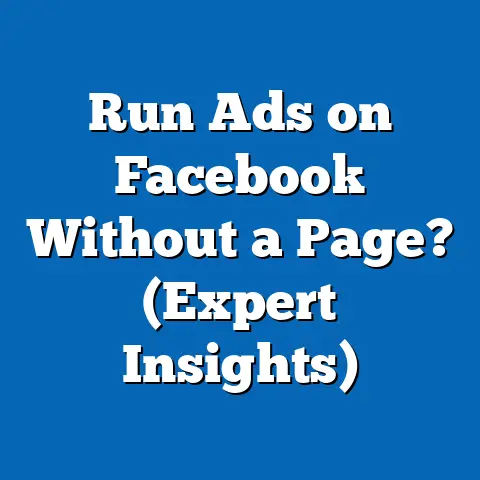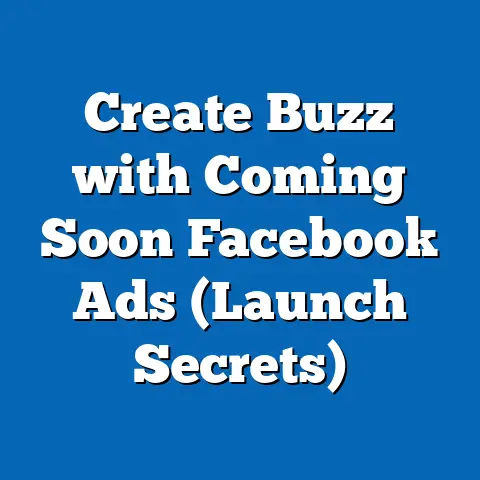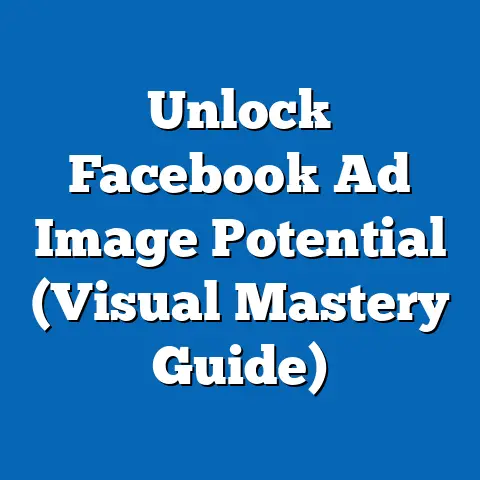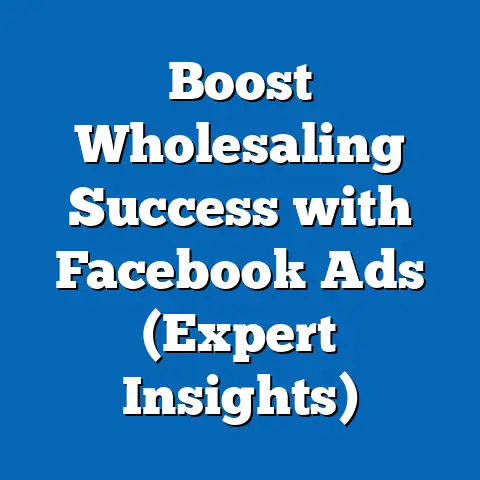Limit Facebook Ad Frequency (Proven Strategies Revealed)
Remember when you were a kid and that one toy commercial would play every single time you watched cartoons? At first, you were probably hyped – “I NEED that action figure!” – but after the tenth, twentieth, hundredth time, you likely started tuning it out, maybe even getting annoyed. That’s ad fatigue in a nutshell, and it’s a real problem in digital marketing, especially on platforms like Facebook. Just as children can become disinterested or even irritated by repetitive advertising, consumers can react negatively to Facebook ads that appear too frequently.
I’ve seen countless campaigns where initial excitement quickly turns into wasted ad spend because frequency wasn’t managed properly. That’s why, in this article, I’m diving deep into the critical topic of limiting Facebook ad frequency. I’ll share proven strategies to ensure your campaigns reach your audience effectively without causing ad fatigue, helping you maintain engagement, optimize ad performance, and build a positive brand image.
Understanding Ad Frequency
Ad frequency, simply put, is the average number of times a single user sees your ad within a specific timeframe. It’s a crucial metric to monitor because it directly impacts how your target audience perceives your brand and responds to your advertising efforts.
Think of it like this: if you meet someone for the first time and immediately start pitching them your product, you’re likely to come across as pushy and off-putting. The same principle applies to advertising. Overexposure can lead to ad fatigue, where your audience becomes desensitized to your message and stops paying attention.
The Psychology of Ad Frequency
The psychological impact of ad frequency is significant. Initially, seeing an ad can create awareness and spark interest. However, as the frequency increases, the law of diminishing returns kicks in. Here’s a breakdown of how it typically unfolds:
- Awareness: The first few impressions create awareness of your brand or product.
- Recall: Repeated exposure helps your audience remember your message.
- Recognition: They start to recognize your brand and associate it with certain values or benefits.
- Fatigue: Beyond a certain point, seeing the same ad over and over again leads to annoyance and ad fatigue.
Overexposure can also lead to a phenomenon called “banner blindness,” where users consciously or unconsciously ignore ads, even if they might be relevant to their interests.
Data-Backed Insights
Several studies highlight the importance of managing ad frequency. For instance, a study by Nielsen found that brand recall peaks after approximately three exposures to an ad, after which the impact starts to plateau. Beyond that, the return on investment diminishes significantly.
Another study by HubSpot revealed that high ad frequency can lead to a decrease in click-through rates (CTR) and conversion rates. As users become fatigued, they are less likely to engage with your ads, ultimately hurting your campaign performance.
Key Takeaway: Ad frequency is a double-edged sword. While it’s essential for building awareness, overexposure can lead to ad fatigue and diminished returns.
The Risks of High Ad Frequency
Ignoring ad frequency can have several negative consequences, impacting your brand perception, advertising costs, and overall marketing effectiveness. Let’s break down the key risks:
Ad Fatigue
The most immediate risk of high ad frequency is ad fatigue. When users see the same ad repeatedly, they become desensitized to the message. This leads to:
- Decreased Engagement: Users are less likely to click, like, comment, or share your ad.
- Lower Conversion Rates: Even if users initially showed interest, they may lose that interest due to overexposure.
Negative Brand Perception
High ad frequency can also damage your brand’s image. Bombarding users with the same ad can make your brand seem:
- Annoying: Users may associate your brand with intrusive advertising practices.
- Desperate: Overly frequent ads can suggest that your brand is struggling to attract customers organically.
Increased Costs
Ironically, high ad frequency can also lead to increased advertising costs. Here’s why:
- Lower Quality Scores: Facebook’s algorithm rewards ads that provide a positive user experience. If your ads are causing ad fatigue, your quality score will decrease, leading to higher costs per impression.
- Wasted Impressions: If users are ignoring your ads due to fatigue, you’re essentially paying for wasted impressions that don’t contribute to your marketing goals.
Real-World Examples
I remember working with a client in the e-commerce space who was running a campaign to promote a new product line. Initially, the campaign performed well, with high CTR and conversion rates. However, as they scaled the campaign without adjusting the frequency settings, they noticed a sharp decline in performance.
Users started complaining about seeing the same ad repeatedly, and the brand’s social media pages were flooded with negative comments. They eventually had to pause the campaign and reassess their strategy, realizing that high ad frequency was damaging their brand’s reputation.
Maintaining a Positive User Experience
Maintaining a positive user experience is paramount in today’s digital landscape. Consumers have countless options and are more likely to support brands that respect their time and attention. By managing ad frequency, you can demonstrate that you value your audience and are committed to providing them with a relevant and engaging experience.
Key Takeaway: High ad frequency can lead to ad fatigue, negative brand perception, and increased advertising costs. Maintaining a positive user experience is essential for building brand loyalty and driving long-term growth.
Proven Strategies to Limit Facebook Ad Frequency
Now that we’ve established the importance of managing ad frequency, let’s dive into some proven strategies that you can implement in your Facebook advertising campaigns:
Strategy 1: Audience Segmentation
One of the most effective ways to limit ad frequency is to segment your audience. By dividing your target audience into smaller, more specific groups, you can tailor your ad delivery and ensure that each segment receives the right message at the right time.
Here are some tips for effective audience segmentation:
- Demographics: Segment your audience based on age, gender, location, education, and other demographic factors.
- Interests: Target users who have expressed interest in specific topics, hobbies, or activities.
- Behaviors: Segment your audience based on their online behavior, such as purchase history, website activity, and engagement with your content.
- Custom Audiences: Create custom audiences based on your existing customer data, such as email lists or website visitors.
- Lookalike Audiences: Expand your reach by targeting users who are similar to your existing customers.
By segmenting your audience, you can create more relevant and engaging ads, reducing the likelihood of ad fatigue. For example, if you’re promoting a new fitness program, you can segment your audience based on their fitness interests and create ads that specifically address their needs and goals.
Strategy 2: Ad Rotation
Another effective strategy is to rotate your ad creatives regularly. By creating a library of ad variations, you can keep your content fresh and engaging, preventing users from seeing the same ad repeatedly.
Here are some tips for creating effective ad variations:
- Vary Your Visuals: Use different images, videos, and graphics to capture your audience’s attention.
- Experiment with Headlines: Test different headlines to see which ones resonate best with your target audience.
- Change Your Ad Copy: Use different language and messaging to appeal to different segments of your audience.
- Test Different Call-to-Actions: Experiment with different call-to-actions to see which ones drive the most conversions.
I personally like to create at least 3-5 variations of each ad, focusing on different angles and highlighting different benefits. This allows me to keep the message fresh and engaging, even if users see my ads multiple times.
Strategy 3: Frequency Capping
Facebook offers built-in frequency capping tools that allow you to limit the number of times an individual sees your ad within a specific timeframe. This is a powerful tool for preventing ad fatigue and optimizing your campaign performance.
Here’s how to set up frequency caps within Facebook Ads Manager:
- Go to Ad Set Level: Navigate to the ad set level of your campaign.
- Edit Placement: In the “Placement” section, choose “Manual Placements.”
- Optimization & Delivery: Scroll down to the “Optimization & Delivery” section.
- Impression: Under “Frequency Capping,” set the maximum number of impressions per user per day or week.
Facebook recommends starting with a frequency cap of 1-2 impressions per day or 3-5 impressions per week. However, the optimal frequency cap will vary depending on your target audience, ad creative, and campaign goals.
Strategy 4: A/B Testing
A/B testing is a powerful method for finding the optimal frequency for engagement. By testing different ad creatives and audiences, you can identify the frequency at which your ads are most effective.
Here are some tips for running effective A/B tests:
- Test One Variable at a Time: Focus on testing one variable at a time, such as ad creative, audience, or frequency cap.
- Use a Control Group: Create a control group that receives the standard ad frequency, and compare its performance to the test group.
- Track Key Metrics: Monitor key metrics such as CTR, conversion rates, and cost per acquisition (CPA) to gauge the effectiveness of your ads.
- Analyze Your Results: Use the data from your A/B tests to make informed decisions about your ad frequency.
Strategy 5: Timing and Scheduling
The timing and scheduling of your ads can also impact frequency and overall campaign performance. By analyzing audience behavior, you can determine the best times to run your ads and avoid overexposing your audience during off-peak hours.
Here are some insights into analyzing audience behavior:
- Facebook Insights: Use Facebook Insights to understand when your audience is most active on the platform.
- Website Analytics: Analyze your website analytics to identify the times when your website traffic is highest.
- Customer Data: Review your customer data to identify patterns in their purchasing behavior.
Based on this data, you can schedule your ads to run during the times when your audience is most likely to engage with them, reducing the risk of ad fatigue.
Key Takeaway: Implement these strategies to effectively limit ad frequency, ensuring your campaigns reach your audience without causing ad fatigue.
Monitoring and Adjusting Frequency
Limiting ad frequency isn’t a “set it and forget it” process. Continuous monitoring of your ad performance metrics is crucial to gauge the effectiveness of your frequency management strategies. Facebook Insights and analytics provide valuable data that can help you track frequency and make data-driven adjustments.
Key Metrics to Monitor
- Frequency: Keep a close eye on the frequency metric to see how often your ads are being shown to individual users.
- Reach: Monitor your reach to ensure that you’re reaching a broad enough audience.
- CTR: Track your CTR to see how engaged your audience is with your ads.
- Conversion Rates: Monitor your conversion rates to see how effectively your ads are driving desired actions.
- Cost per Acquisition (CPA): Track your CPA to see how much it costs to acquire a new customer.
Making Data-Driven Adjustments
If you notice that your frequency is too high and your engagement is declining, you can make several adjustments to your campaign:
- Lower Your Frequency Cap: Reduce the maximum number of impressions per user per day or week.
- Rotate Your Ad Creatives More Frequently: Add new ad variations to keep your content fresh and engaging.
- Refine Your Audience Targeting: Narrow your audience to target users who are more likely to engage with your ads.
- Pause Underperforming Ads: Pause ads that are causing ad fatigue and focus on ads that are performing well.
Key Takeaway: Continuously monitor your ad performance metrics and make data-driven adjustments to optimize your ad frequency and maximize your campaign performance.
Conclusion
Limiting ad frequency is not just a tactical consideration; it’s a strategic imperative for long-term success on Facebook. By understanding the psychological impact of ad frequency, implementing proven strategies to manage it, and continuously monitoring your performance, you can ensure that your campaigns reach your audience effectively without causing ad fatigue.
Remember, the goal is not just to generate impressions but to build meaningful connections with your audience. By valuing their time and attention, you can foster better relationships, enhance your brand image, and drive sustainable growth for your business. So, take the proven strategies I’ve shared and start implementing them in your campaigns today to enhance your Facebook advertising effectiveness and foster better relationships with your audience. You’ll be amazed at the positive impact it has on your results!

